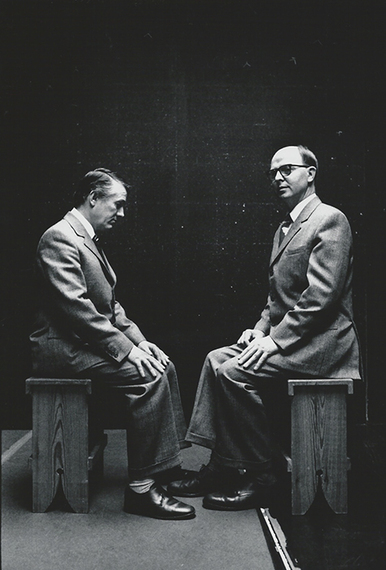In the age of the smartphone, many of us are recording and sharing our entire lives digitally. Nostalgia-infused phone apps such as Hipstamatic and Instagram are just some of the accessible tools that have catapulted the idea of 'capturing the moment' into a new age. The instant share-ability and old-school feel of photographs edited with these apps form a bizarre juncture where nostalgia and modernity meet.
But, is something being lost? Is the art of photography being diluted, and can a smartphone ever do what a 'real camera' does? Are our children being robbed of a 'proper' photographic record of their lives?
I spoke to photographic ninja Robert Goldstein whose exhibition 'Still' opens this week at the Whitfield Fine Art Gallery in London. Robert has been capturing enduring images for over three decades and in his spare time, he teaches street photography to kids who have been excluded from mainstream education for social or behavioural reasons. Goldstein explains that photography helps these children gain confidence and take control of their lives. His students are as likely to use the phone in their pocket as a DLR camera in their work, so I asked Robert for tips on thinking like a photographer when using a smartphone. Here is what he had to say:
1. The thing about photography is that it's instinctual. There is no difference between a film Leica camera and a smartphone. Technically the smartphone thinks for you as you don't have to worry about shutter speed or film. You just have to concentrate on the subject. At the end of the day it's just a tool - it's in your eye , that's where it begins.
2. Keep clicking till you think you have it - delete what you don't like.
3. Notice how light falls on your subject . For example, dark skin or dark tones need more exposure or more light to get definition. A black labrador needs more light than a golden labrador. Darkness eats the light, keep this in mind when you're shooting. Your smartphone will try and compensate and automatically put the flash on unless you deliberately switch it off. Experiment.
4. Composition is everything. Think about framing and how you are composing the scene. You can leave on the grid setting on your camera phone to see how the picture divides up. Where you put your central subject matter is important. For example, a face in the middle of a photo tells a different story from a face over to the right.
5. Be a Ninja! What I mean is, develop your spatial awareness. You have to learn how to be a ghost to take great photographs. You must be there but not be there. It's Bruce Lee like; to practice the art of not disturbing your subject. "The art of not being seen" - it's a book that hasn't been written yet.
6. Think about colour. Personally, I mainly use black and white in my work because there is nothing to distract from the subject I am photographing. For me, B&W doesn't sway you from seeing exactly what is being photographed whereas colours can bamboozle you into thinking it's a great photo through the viewfinder, but then when you see the print, the colour is more present than the subject. B&W is more real for me. Experiment!
7. Practice, practice practice! If you enjoy taking pictures, do it like you should do everything else you love in life; with total passion.
Robert Goldstein's Exhibition of photographs, 'STILL' is at the Whitfield Fine Art Gallery, 23 Dering Street, off New Bond St, London W1 S1AW +44 20 7355 0040 until November 15th 2013. Gallery open 10.00am to 5.30pm weekdays, 11.00am to 4.00pm Saturdays. www.robertgoldstein.com

